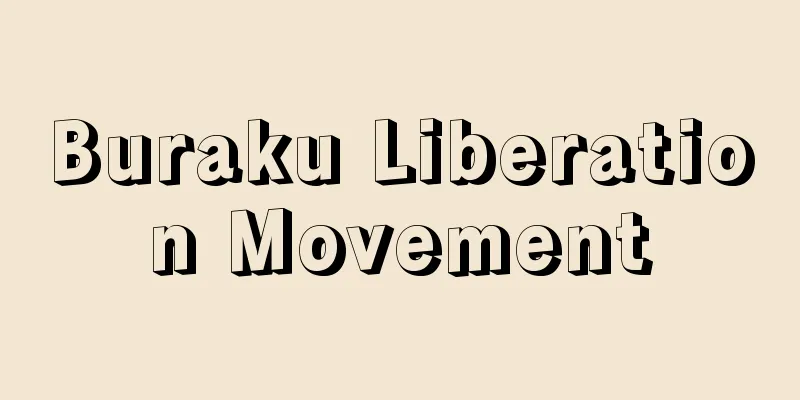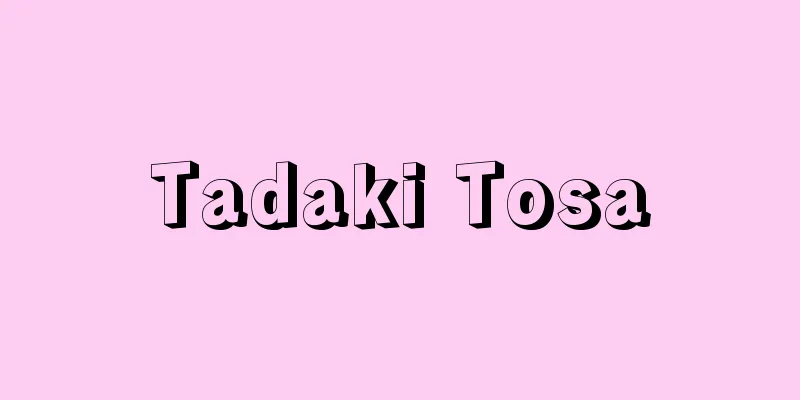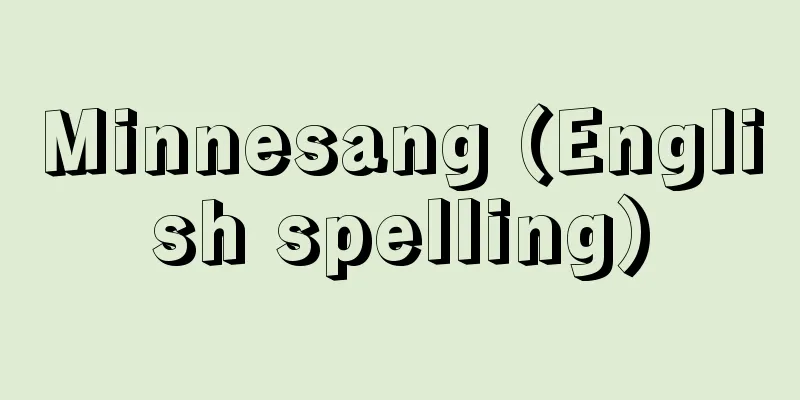Buraku Liberation Movement

|
A social movement aiming for liberation from discrimination against Burakumin. The 1871 Daijokan Proclamation (Emancipation Edict) legally and institutionally abolished the Edo period's outcast status, along with the designations of Eta and Hinin, but the social contempt for people of outcast status and the areas in which they lived did not disappear, and discrimination continued, with them being derogatorily referred to as new commoners. After the Sino-Japanese War, it was gradually raised as a social issue, but the main focus was on improving people's lives. However, after the founding of the National Levelers' Association in 1922, it developed into an active movement for the elimination of discrimination and social reform as part of the proletarian movement (the Levelers' Association movement). It was temporarily stagnant during World War II, but was rebuilt immediately after the war, and in 1946 the National Committee for Buraku Liberation was formed, inheriting the traditions of the National Levelers' Association (renamed the Buraku Liberation League in 1955). From then on, with this organization as the core, liberation movements were launched in various fields, with administrative struggles as its basic tactic, and it also actively participated in labor evaluation struggles in the late 1950s. In 1965, the Dowa Policy Council submitted a report, and Dowa administration began in earnest (in 1969 the Special Measures Law for Dowa Policy Projects was enacted as temporary legislation for a period of 10 years), but a difference of opinion arose within the Buraku Liberation League over the evaluation of this report (the mainstream faction = the majority supports the report and aims for its complete implementation, while the anti-mainstream faction = the minority considers the report's contents to be deceptive), and further conflicts intensified over the Yata Education Discrimination Incident and the struggle to denounce the Sayama Discrimination Trial (Sayama Incident), which the mainstream faction placed at the center of their movement, and in 1976 the minority faction left the league to form the National Buraku Liberation Movement Federation. In the late 1970s, the Buraku Liberation League focused on the main issues of the Sayama Discrimination Trial and the strengthening and revision of the Special Measures Law for Buraku Improvement Projects, which was about to expire. The law was extended for three years, and after it expired in 1982, it was succeeded by the Special Measures Law for Regional Improvement Projects, and in 1987, the Law on National Special Financial Measures for Specific Regional Improvement Projects was enacted, but after a five-year extension, it expired in 1997 (the revised law was enacted in April of the same year). The Buraku Liberation League has consistently taken a position of placing importance on the establishment of laws as a means of elimination, based on the recognition that Buraku discrimination has not been fundamentally eliminated in various ways, and since the mid-1980s has been aiming to enact the Basic Law for Buraku Liberation, which is not a time-limited law. On the other hand, the National Federation of Buraku Liberation Movement is opposed to the law, on the grounds that Buraku discrimination is basically being eliminated, and that the enactment of the law would lead to discrimination being solidified instead. In addition, the All Japan Dowa Association was formed in 1960 as an organization that aims to eliminate discrimination, and is working on the movement from its own perspective. In 1997, the Human Rights Protection Measures Promotion Law was enacted, and the reasons for proposing this bill to the Diet clearly state that "unjust discrimination based on social status or family origin, such as the Dowa problem, unjust discrimination based on race, creed, sex, and other human rights violations still exist." → Related topics: Mankichi Nishimitsu | Literacy movement | Outcasts | Buraku issues | Discriminated communities Source : Heibonsha Encyclopedia About MyPedia Information |
|
部落差別からの解放をめざす社会運動。1871年の〈太政官布告(解放令)〉によって江戸時代の賤民身分はえた・非人の呼称とともに法的・制度的には廃止されたが,その後も賤民身分であった人々とその集住地域に対する社会的賤視は解消されず,新平民と蔑称(べっしょう)されて差別状態は続いた。日清戦争後から次第に社会問題としてとり上げられたが,主眼はもっぱら生活改善におかれた。しかし1922年全国水平社の結成以後,無産運動の一環として積極的な差別撤廃・社会改革運動に発展(水平社運動)。第2次大戦中は一時停滞したが,戦後直ちに運動は再建され,1946年全国水平社の伝統を継承した部落解放全国委員会が結成された(1955年部落解放同盟と改称)。以後この組織を核に,行政闘争を基本的戦術とした様々な場での解放運動が展開され,1950年代末の勤評闘争などにも積極的に参加した。1965年同和対策審議会の答申があり,同和行政が本格化したが(1969年〈同和対策事業特別措置法〉が10年間の時限立法として成立),この答申の評価をめぐって部落解放同盟内部に意見の対立が生じ(主流派=多数派は答申を支持して完全実施をめざす立場,反主流派=少数派は答申の内容を欺瞞とする立場),さらに主流派が運動の中心にすえた矢田教育差別事件,狭山差別裁判糾弾闘争(狭山事件)をめぐって抗争が激化,1976年少数派は脱会して全国部落解放運動連合会を結成するに至った。部落解放同盟は1970年代後半,狭山差別裁判糾弾闘争や失効を迎える〈同和対策事業特別措置法〉の強化,改正を主要課題として運動を進めた。同法は3年間延長され,1982年に失効したのちは〈地域改善対策事業特別措置法〉に引き継がれ,さらに1987年には〈地域改善対策特定事業に係る国の財政上の特別措置に関する法律〉が成立したが,同法は5年間の延長ののち1997年に失効した(同年4月再改正法を施行)。部落解放同盟はこの間一貫して,部落差別は様々な面で根本的な解消には向かっていないという認識のもとに,解消の手段としての法の整備を重視する立場をとり,1980年代半ばからは時限立法ではない〈部落解放基本法〉の制定をめざしている。一方全国部落解放運動連合会は,基本的には部落差別は解消されつつあり,法の制定はかえって差別を固定化することにつながるという立場から反対している。また差別撤廃をめざす組織として1960年に結成された全日本同和会が別にあり,独自の立場で運動に取り組んでいる。なお,1997年には人権擁護施策推進法が施行されたが,この法案の国会への提案理由の中には〈同和問題等社会的身分や門地による不当な差別,人種,信条,性別による不当な差別その他の人権侵害がなお存在しており〉と明記されている。 →関連項目西光万吉|識字運動|賤民|同和問題|被差別部落 出典 株式会社平凡社百科事典マイペディアについて 情報 |
Recommend
Heterodontidae
…A general term for marine fish belonging to the ...
Examination magazine - jukenzasshi
Basically, it is a practical magazine with informa...
Puffinus griseus (English spelling) Puffinusgriseus
…[Hiroshi Hasegawa]. … *Some of the terms mention...
Love bird (Peony parakeet) - Love bird
A general term for birds of the Agapornis genus in...
Observation of the mind
〘Noun〙 Buddhist term. Observing the true nature of...
Summary trial procedure - Summary trial procedure
A public trial procedure established in 1953 (Sho...
Far tide - Encho
…In Japan, where swimming developed as a martial ...
de Thou, N. (English spelling) deThouN
…French historian. The de Thou family was an old ...
Kyumenden - Kyumenden
…The land was either cultivated by the owner hims...
Nagasaki Takatsuna
Year of death: 2nd year of Shokei/3rd year of Genk...
Phonolight - Fonolight (English spelling) phonolite
In the narrow sense, it is a fine-grained volcani...
Music of Changes
...The use of a kind of chance in music has exist...
Atsuta Watashi - Atsuta Watashi
…It is also called Kuwana-watari, Atsuta-watari, ...
Seed rice - Tanemomi
〘 noun 〙 The rice grains selected and set aside to...
Bialowiejska (English spelling)
…At one time in the Middle Ages, Poland exported ...









